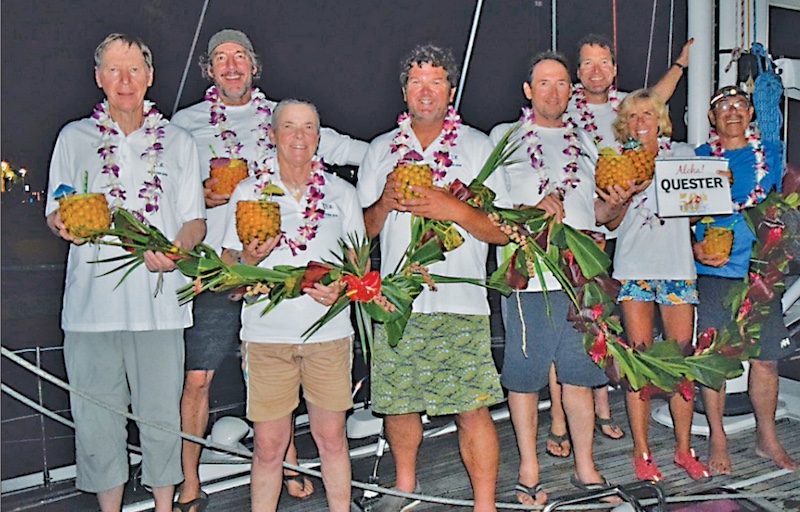
‘Quester’ Takes a Leisurely Puddle Jump
Racing sailors never rest. No matter what boat they are graced with crewing, no matter what conditions and circumstances they are thrust into, no matter what their responsibilities are, they are always trying to maximize speed and performance. The old adage, “If there are two sailboats on the ocean, there is a race,” is not only true when it comes to racing sailors, it barely registers with them as worth the breath it takes to repeat it. Of course it will be a race. What else is there?
So when I found myself this past July on a five-person crew of the Oyster 56 Quester pulling away from her Anacortes slip and nosing into Puget Sound on her way to Honolulu, this racing sailor had some trepidation. This was going to be the first such crossing from the West Coast to Hawaii I had signed on to that was not a race — or rather “the race” — that is, the Transpac. How was I going to pass my days and my watches without the intensity of a racing mindset? How was I going to keep my focus when focus was not as much of a priority? How was I going to manage calories when I was likely not going to be burning them as fiercely as I would under racing conditions? In fact, how was I going to react to actually having time to relax, shower, read, eat well, contemplate, ponder, and otherwise take advantage of the leisurely pace Quester was going to set?

My transpacific experiences began in 2009 with Orange Coast College’s Alaska Eagle program. Alaska Eagle (the former 1977–78 Whitbread racer Flyer) was OCC’s flagship vessel, and for many years OCC offered ambitious sailing adventures aboard her, including acting as the communication vessel for the Transpac. (This was prior to all of the technological innovations such as Yellow Brick.) In the ’09 race, Alaska Eagle was not an official racer, but captain Brian Furie and first mate Karen Prioleau ran her as such.
The Eagle had to keep up with the bulk of the fleet. We never used the autopilot. Everyone took their turn on the helm, night and day. There were sail changes and reefings, spinnaker hoists and spinnaker blowouts — the last one managing to wrap itself around the propeller, thereby eliminating any engine use for the last 1,500 miles. In short, even though we were not racing, we were. It was an excellent introduction to high-performance, bluewater sailing. We were 12 days on the water and I ate it up.
